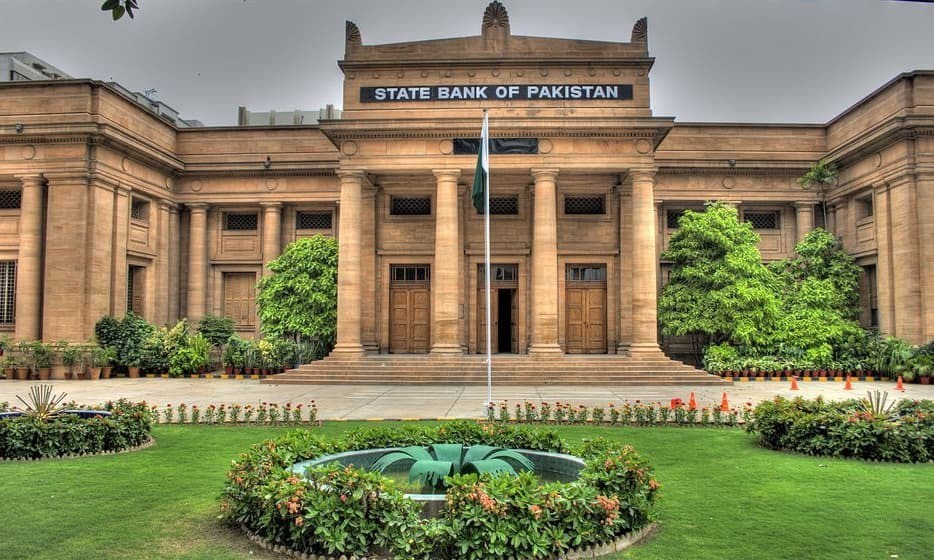The MPC believes the current monetary policy stance is appropriate to achieve the inflation target of 5-7 percent by the end of FY25, although this assessment is contingent upon continued fiscal consolidation and timely realisation of planned external inflows.
By Muhammad Ali
ISLAMABAD: The Monetary Policy Committee (MPC) of the State Bank of Pakistan (SBP) Tuesday announced its decision to maintain the policy rate steady at 22 percent despite a recent gas price hike that contributed to higher-than-expected inflation in November.
The MPC acknowledged the impact of the gas price hike on inflation but believes that it will be offset by other factors, such as the recent decrease in international oil prices and improved availability of agricultural produce.
The MPC also noted several positive developments in the economy, including the successful completion of the first review under the IMF program, which will unlock financial inflows and improve SBP’s foreign exchange reserves. Additionally, the quarterly GDP growth remained in line with expectations, and consumer and business confidence surveys show improvement in sentiment.
Real GDP growth is expected to remain moderate during FY24, driven by the agriculture and manufacturing sectors. The current account balance has improved significantly, with the deficit narrowing by 65.9 percent year-on-year. However, official inflows have been tepid since July, leading to a gradual decline in SBP’s FX reserves. The successful completion of the IMF program is expected to improve this situation.
Fiscal consolidation is also on track, with both tax and non-tax revenues showing strong growth. The MPC emphasised the importance of continuing this trend for achieving macroeconomic stability.
Broad money growth has decelerated, reflecting net retirements in private sector credit and a decline in commodity operations financing. Reserve money has also followed a similar trajectory. The Net Foreign Assets of the SBP and the overall banking system have expanded since June due to considerable FX inflows in July. This, along with the contraction in Net Domestic Assets since June, has improved the compositional mix of broad money and reserve money.
While the November inflation rate was higher than expected, the MPC believes that it will decline significantly in the second half of FY24 due to contained aggregate demand, easing supply constraints, moderation in international commodity prices, and a favourable base effect.
Key Takeaways
General
- Policy rate remains at 22 percent to control inflation.
- Recent gas price hike contributed to higher inflation in November.
- Moderate economic recovery is expected in FY24.
- IMF program review is expected to improve financial inflows and FX reserves.
- Fiscal consolidation and timely external inflows are crucial for achieving the inflation target.
Real Sector
- Real GDP grew by 2.1 percent in Q1-FY24, primarily driven by agriculture.
- Manufacturing sector also recorded a moderate recovery.
- Services sector growth remained subdued.
External Sector
- Current account deficit narrowed by 65.9 percent YOY during Jul-Oct FY24.
- Worker remittances improved due to SBP and government initiatives.
- FX reserves declined due to tepid official inflows and ongoing debt repayments.
- Successful completion of the IMF program expected to improve FX reserves position.
Fiscal Sector
- Tax and non-tax revenues showed strong growth during Jul-Nov FY24.
- Expenditures were contained at last year’s levels in Q1-FY24.
- Continued fiscal consolidation is emphasised for achieving macroeconomic stability.
Money and Credit
- Broad money (M2) growth decelerated to 13.7 percent YOY as of November 24.
- Reserve money followed a similar trajectory.
- Net Foreign Assets of SBP and banking system have expanded since June.
Inflation Outlook
- Inflation reached 29.2 percent YOY in November, with gas prices contributing 3.2 percentage points.
- Core inflation remained sticky at 21.5 percent during the month.
- Inflation expectations remain elevated, but are expected to decline in the second half of FY24.
- The MPC’s decision to maintain the policy rate reflects their commitment to controlling inflation while supporting economic growth.
Complete Text
Complete text of the Monetary Policy Statement is given below.
Monetary Policy Statement
December 12, 2023
1. At its meeting today, the Monetary Policy Committee (MPC) decided to maintain the policy rate at 22 percent. The decision does take into account the impact of the recent hike in gas prices on inflation in November, which was relatively higher than the MPC’s earlier expectation. The Committee viewed that this may have implications for the inflation outlook, albeit in the presence of some offsetting developments, particularly the recent decrease in international oil prices and improved availability of agriculture produce. Further, the Committee assessed that the real interest rate continues to be positive on a 12-month forward looking basis and inflation is expected to remain on a downward path.
2. The MPC noted several key developments since its October meeting. First, the successful completion of the staff level agreement of the first review under the IMF SBA program would unlock financial inflows and improve the SBP’s FX reserves. Second, the quarterly GDP growth outcome for Q1-FY24 remained in line with the MPC’s expectation of a moderate economic recovery. Third, recent consumer and business confidence surveys show improvement in sentiments. Finally, core inflation is still at an elevated level and is coming down only gradually.
3. Taking stock of these developments, the Committee assessed that the current monetary policy stance is appropriate to achieve the inflation target of 5-7 percent by end-FY25. The Committee reiterated that this assessment is also contingent upon continued targeted fiscal consolidation and timely realization of planned external inflows.
Real sector
4. The MPC viewed that the recovery in real GDP during FY24 is expected to remain moderate. According to the first estimates, real GDP grew by 2.1 percent y/y in Q1-FY24, compared to 1.0 percent in the same quarter last year. As per earlier expectation, recovery in the agriculture sector was the major driver of this growth. The manufacturing sector also recorded a moderate recovery, with growth in large-scale manufacturing becoming positive after contracting in the preceding four quarters. Unlike the commodity producing sector, growth in the services sector remained subdued.
External sector
5. The MPC observed a significant improvement in the current account balance, as the deficit narrowed by 65.9 percent y/y to $1.1 billion during Jul-Oct FY24. While imports declined, exports inched up on the back of food items, especially rice. Further, workers’ remittances also improved in October and November 2023 as compared to corresponding months last year, incentivized by SBP and government initiatives to transfer funds through formal channels, and normalization of the kerb premium. However, tepid official inflows since July and ongoing debt repayments have led to a gradual decline in the SBP’s FX reserves. In this regard, the Committee expected that the successful completion of the first review of the ongoing IMF program is likely to improve financial inflows as well as the FX reserves position.
Fiscal sector
6. The Committee noted that the improvement in fiscal indicators continued, as both tax and non-tax revenues have shown strong growth. During Jul-Nov FY24, FBR tax collection grew by 29.6 percent, while non-tax revenues also increased amidst substantial growth in petroleum development levy and transfer of sizable SBP profit. Further, overall expenditures in Q1-FY24 were contained at last year’s levels. The MPC emphasized the importance of continuing the ongoing fiscal consolidation, preferably through broadening the tax base and restraints on non-essential expenditures, for achieving macroeconomic stability.
Money and credit
7. The broad money (M2) growth decelerated to 13.7 percent y/y as of November 24, 2023 from 14.2 percent as of end-June. This deceleration is attributed to net retirements in private sector credit and more than seasonal decline in commodity operations financing. Reserve money followed a similar trajectory, slowing down from June, primarily due to a significant deceleration in currency in circulation. The Net Foreign Assets of the SBP and the overall banking system have expanded since June due to considerable FX inflows in July. This, along with the contraction in Net Domestic Assets since June, has improved the compositional mix of broad money and reserve money.
Inflation outlook
8. The MPC noted that the higher-than-expected increase in gas prices contributed 3.2 percentage points to the 29.2 percent y/y inflation in November 2023. Further, core inflation remained sticky at 21.5 percent during the month, only slightly lower from its peak of 22.7 percent in May 2023. Inflation expectation of both consumers and businesses, though improving in recent months, remain at an elevated level. Nevertheless, barring further sizable increase in administered prices, the MPC continues to expect that headline inflation will decline significantly in the second half of FY24 due to contained aggregate demand, easing supply constraints, moderation in international commodity prices and favorable base effect.
Copyright © 2021 Independent Pakistan | All rights reserved




